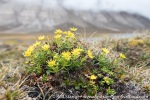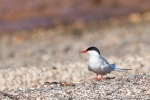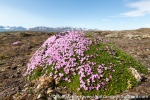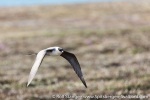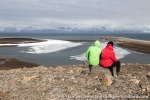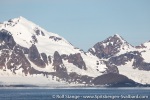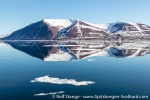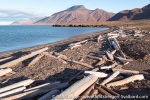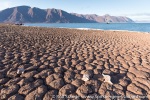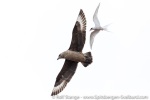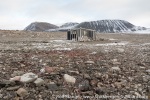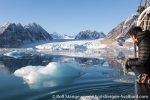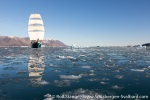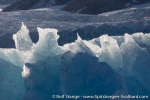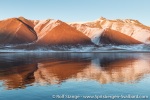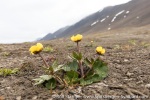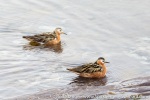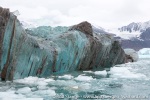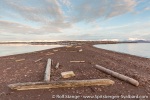-
current
recommendations- Liefdefjord
New page dedicated to one of Spitsbergen's most beautiful fjords. Background information and many photos.
- New Spitsbergen guidebook
The new edition of my Spitsbergen guidebook is out and available now!
- Liefdefjord
New page dedicated to one of Spitsbergen's most beautiful fjords. Background information and many photos.
Page Structure
-
Spitsbergen-News
- Select Month
- May 2025
- April 2025
- March 2025
- February 2025
- January 2025
- December 2024
- November 2024
- October 2024
- September 2024
- August 2024
- July 2024
- June 2024
- May 2024
- April 2024
- March 2024
- February 2024
- January 2024
- December 2023
- November 2023
- October 2023
- September 2023
- August 2023
- July 2023
- June 2023
- May 2023
- April 2023
- March 2023
- February 2023
- January 2023
- December 2022
- November 2022
- October 2022
- September 2022
- August 2022
- July 2022
- June 2022
- May 2022
- April 2022
- March 2022
- February 2022
- January 2022
- December 2021
- November 2021
- October 2021
- September 2021
- August 2021
- July 2021
- June 2021
- May 2021
- April 2021
- March 2021
- February 2021
- January 2021
- December 2020
- November 2020
- October 2020
- September 2020
- August 2020
- July 2020
- June 2020
- May 2020
- April 2020
- March 2020
- February 2020
- January 2020
- December 2019
- November 2019
- October 2019
- September 2019
- August 2019
- July 2019
- June 2019
- May 2019
- April 2019
- March 2019
- February 2019
- January 2019
- December 2018
- November 2018
- October 2018
- September 2018
- August 2018
- July 2018
- June 2018
- May 2018
- April 2018
- March 2018
- February 2018
- January 2018
- December 2017
- November 2017
- October 2017
- September 2017
- August 2017
- July 2017
- June 2017
- May 2017
- April 2017
- March 2017
- February 2017
- January 2017
- December 2016
- November 2016
- October 2016
- September 2016
- August 2016
- July 2016
- June 2016
- May 2016
- April 2016
- March 2016
- February 2016
- January 2016
- December 2015
- November 2015
- October 2015
- September 2015
- August 2015
- July 2015
- June 2015
- May 2015
- April 2015
- March 2015
- February 2015
- January 2015
- December 2014
- November 2014
- October 2014
- September 2014
- August 2014
- July 2014
- June 2014
- May 2014
- April 2014
- March 2014
- February 2014
- January 2014
- December 2013
- November 2013
- October 2013
- September 2013
- August 2013
- July 2013
- June 2013
- May 2013
- April 2013
- March 2013
- February 2013
- January 2013
- December 2012
- November 2012
- October 2012
- September 2012
- August 2012
- July 2012
- June 2012
- May 2012
- April 2012
- March 2012
- February 2012
- January 2012
- December 2011
- November 2011
- October 2011
- September 2011
- August 2011
- May 2011
- April 2011
- March 2011
- February 2011
- January 2011
- December 2010
- November 2010
- September 2010
- August 2010
- July 2010
- June 2010
- May 2010
- April 2010
- March 2010
- February 2010
- November 2009
- October 2009
- August 2009
- July 2009
- June 2009
- May 2009
- April 2009
- March 2009
- February 2009
- January 2009
- December 2008
- November 2008
- October 2008
- August 2008
- July 2008
- June 2008
- May 2008
- April 2008
- March 2008
- February 2008
- April 2000
- Select Month
-
weather information
-
Newsletter

| Guidebook: Spitsbergen-Svalbard |
Home → July, 2020
Monthly Archives: July 2020 − News & Stories
Water ingress in mine 7
It was probably the extremely warm weather of the last weekend that now gives the mining company Store Norske Spitsbergen Kulkompani (SNSK) troubles with water in mine 7, the last Norwegian coal mine still in operation in Spitsbergen.
Water ingressions are not unusual in Spitsbergen’s coal mines, many of which are partly situated under glaciers. Mine 7 is close to the small ice cap Foxfonna which “provides” meltwater to the mine during the melting season, so pumps are routinely in operation. But the latest ingression went far beyond the capacities of the available pumps.

Water ingressions are not uncommon in the coal mines in Spitsbergen. Here, a boat is even kept available to move around in flooded areas (the photo is from the mine Svea Nord).
Mine 7 is currently anyway on plant holiday. The water ingress was discovered during a routine control on Sunday morning. Equipment and personell from Sveagruva and mainland Norway are now supposed to deal with the situation and return the mine back into productive condition. Coal production is scheduled to start up again, but this is likely to be delayed.
Coal from mine 7 is mainly used in Longyearbyen’s coal power plant. Another fraction is exported. According to the SNSK, there is enough coal in storage in Longyearbyen to feed the power plant 5-6 months.
New temperature record in Longyearbyen

The temperature display at the petrol station showed 23 degrees (centigrade) on Saturday afternoon. The official measurement was 21.7°C.
Summer heat beyond 21°C – that is very unusual for Longyearbyen. The highest temperature ever so far had been 21.3 degrees centigrade, measured on 16 July 1979. This record was broken on Saturday late afternoon, when the official temperature record went up to 21.7°C.

A record-breaking temperature of 21.7°C was measured on Saturday afternoon in Longyearbyen. The glaciers definitely lost a lot of ice during this weekend. Many tons of melted ice run off every minute here in the river in Longyearbyen.
A light breeze made the heat wave bearable, though. The outside areas of the restaurants were crowded, and it seems a safe guess that a record-breaking number of BBQs were operated in and near Longyearbyen on Saturday evening.

The record summer heat of 21.7°C may well haved resulted in a record-breaking number of BBQs going at the same time.
Hurtigruten and Ponant are operating the first cruises in Spitsbergen
This year’s first two medium-sized expedition cruise ships have now started their season in Spitsbergen – in spite of all restrictions and difficulties connected to shipping in times of the Corona crisis. Yesterday (Friday, 17 July), Hurtigruten’s MS Spitsbergen started her first trip. This may not be too much of a surprise, as tourists from Scandinavian countries (expect Sweden) were allowed into Norway already from 15 June, and around that time the Norwegian government made first steps towards permitting ships with a capacity of up to 500 passengers to sail again in Spitsbergen’s waters. This was and is, in theory, valid for all ship owners, but in practice, it could well be understood as a “lex Hurtigruten”, or at least it is not a surprise that the Norwegian company is the first that is practically able to take advantage of it.

Ponant’s ship Le Boreal on 18 July as the first non-Norwegian cruiseship in the port of Longyearbyen.
The French company Ponant followed on day later with Le Boreal, although the information that tourists from most EU/EEA countries are allowed to travel to Norway again is just one week old; the list of “green countries” was published on 10 July.
And the company’s earlier drafts of the mandatory health safety plan is said to have had its weaknesses. According to Svalbardposten, the local disease control official had expressed beyond doubt to be unhappy about several issues. Ponant, however, seem to have improved their papers and the Sysselmannen have given their thumbs-up and Le Boreal is allowed to sail and operate several trips over a couple of weeks in Svalbard waters. Passengers are flown in and out of Longyearbyen with scheduled flights, as no charter flights are currently permitted at Longyearbyen airport.
There are, however, a couple of conditions that every company considering cruises in Spitsbergen currently has to deal with: amongst others, only half of the passenger capacity of any ship – 264 beds in case of the Le Boreal – is permitted to be used.
The Le Boreal passengers had to be tested negatively for Covid-19 prior to their departure from home and again before disembarkation in Reykjavik, for the first cruise that finished yesterday in Longyearbyen. In case of Covid-19 cases or suspicion on board, the ship has to sail to Tromsø and not to Longyearbyen. It will be interesting to follow the further development and the reaction of other companies, but it seems likely that many, especially those operating small ships, will find it difficult if not impossible to operate under these conditions, also considering economical aspects.
But there are, as always, exceptions to the rule: the small expedition ship Origo has already carried out her first trips in Spitsbergen. But she had spent several months of waiting at anchor for a chance to start sailing near Longyearbyen.
Spitsbergen with SV Antigua in September also cancelled because of Corona
Unfortunately, but not really surprising, we also have to cancel our last Spitsbergen-voyage this year with SV Antigua (08-18 September 2020). Even though Norway will start to allow most European tourists into the country again, current health safety regulations in place to control the Corona/Covid 19 risk make it impossible to operate this voyage and other ones. A small ship in remote areas is not a good situation these days.
The participants will now be contacted by the Geographischen Reisegesellschaft.

With Antigua in Spitsbergen: won’t happen in 2020 because of the Corona virus.
This applies also to our hiking and photography trip in and around Pyramiden (31 August – 07 September 2020). This will also be cancelled, the participants will be contacted soon.
Norway about to open borders for tourists from most EU countries
The Norwegian Ministry of economics and fisheries has communicated that tourists from most EU-countries will be allowed to travel to Norway again from 15 July. Today (10 July) the Norwegian institute for public health (Folkehelseinstitutt) has published a map which shows the various European countries in green or red, respectively. Tourists from “green countries” will be allowed to enter Norway from 15 July without special reason or permission. Citizens from Scandinavian countries except Sweden were already allowed into the country from 15 June.
This map is, however, to be updated at intervals of 14 days or at any time earlier if needed. Tourists from countries with higher or unclear infection rates may be faced with travel restrictions such as quarantine.
Not all EU-countries have made it onto the “green list”: Portugal, Luxembourg, several countries in southeast Europe and most parts of Sweden are bright red on the map. The example of Sweden shows that the Norwegian government may take decisions on a regional level: tourists from several provinces in south Sweden (Blekinge, Kronoberg and Skåne) may also travel to Norway without restrictions from 15 July, in contrast to the rest of the country.
Tourists from countries outside Europe are currently generally not allowed into Norway unless they have close relatives or a partner in the country, according to the Norwegian government.
Spitsbergen with Antigua – some thoughts
Normally, on this site I write and publish articles and blog posts about things that have actually happened, and I try to keep it mostly in unemotional style. But the world isn’t normal these days, so this article/blog/whatever is a bit different.
It is about something that does not happen and it is latently emotional.
Yesterday, on 09 July, we would have boarded good old SV Antigua in Longyearbyen. About 30 passengers, probably quite excited, in good spirits and with high hopes and expectations. Ten crew: the Captain (probably Robert), mates, deckhand, galley and service, three guides – Alex, Kristina and me. Everybody had been looking forward to this trip for quite some time already, until the whole thing fell victim to the corona virus, as so much this weird year. 19 beautiful days in Spitsbergen – gone. Not just any kind of days. Spitsbergen under sail, that is always special, intense and rich with all sorts of experiences. On every trip, we see and experience stuff where I think “wow, how amazing is that …” and that is after almost 25 years of travelling Spitsbergen.

Spitsbergen with Antigua: would have started yesterday (9 July).
Nobody will ever know what we will actually have missed this summer on this trip and others that don’t happen now. But of course it is possible to dream and guess a bit. Let’s try to take it a little step up onto an informed level. As always, it starts with a look at weather forecast and icechart:

Marine weather forecast for Saturday (12 July).
Today (Friday), there would still have been a fair bit of wind on the west coast. Maybe not great for a first day on a ship, but it should be calm in Isfjord, albeit possibly a bit wet, at least during Friday night and Saturday early morning. I think we might have well spent our first day in there. There are so many fjords with an endless number of beautiful places there. Tempelfjord, Billefjord, Nordfjord with Ekmanfjord, Coraholmen and so on, Bohemanflya, … just to mention a few (click on the links for a bit of online travelling). The list is endless.
On Saturday, the wind on the west coast is supposed to turn south. I guess then we might have left Isfjord to set sail and a northerly course with fine sailing wind. The forecast indicates calm weather for a couple of days next week in the north, and then it is just a wonderful world to explore.

Marine weather forecast for Sunday (12 July).
And now a quick look at the ice chart, which is really an interesting one now. There is still a lot of drift ice in the east and northeast and many of the fjords, especially on Nordaustland, are still frozen solid. As it looks now, this trip would not have been a circumnavigation. This is, in times of climate change, not common for a trip that starts near mid July, but obviously not impossible. Of course it would have been exciting just to go and check it out, but it is also interesting to keep checking the ice chart every once in a while during the next couple of weeks and see what happens.

Ice chart Spitsbergen as of 09 July (© Norwegian Meteorological Institute).
But then, have a good look at, say, Liefdefjord and Woodfjord! Open – probably mostly navigable, in other words – drift ice, with some larger ice fields, such as the yellow dot close to Reinsdyrflya, and solid (“fast”) ice in inner Woodfjord! We could certainly have spent a couple of great days there. And then on to Nordaustland and Hinlopen. The combination of drift ice, stunning scenery and a lot of wildlife, from guillemots to walrus, polar bears and probably whales would most likely have made for some unforgettable experiences.
Isfjord
Who knows what we might have done and seen the first day(s) in Isfjord? Just a few impressions from previous years. Could have been something like this. Or something completely different.
- gallery anchor link: #gallery_1801
Click on thumbnail to open an enlarged version of the specific photo.
Forlandsund
We spent quite a bit of time in Forlandsund last year, as those who were there will remember with no regrets 😉 all the Forlandsund pictures are from 2019.
- gallery anchor link: #gallery_1802
Click on thumbnail to open an enlarged version of the specific photo.
Woodfjord and Liefdefjord
Just a few possible impressions as we might have met them now in Woodfjord and Liefdefjord. And Spitsbergen’s north coast is, of course, much more than “just” that. There is also the Raudfjord, Wijdefjord, Sorgfjord … oh, well …
- gallery anchor link: #gallery_1803
Click on thumbnail to open an enlarged version of the specific photo.
A lot of “might have” and “would” and so on. It is currently nothing but imagination and dreams. Unseen, not experienced, not lived. The 40 polar enthusiasts that should have met on a sailing ship to explore the far north, to share the excitment and fascination, will never meet in this combination. Sad.
So, fingers crossed that we will meet next year or in 2022 in Spitsbergen, or elsewhere between the north pole and the south pole!
News-Listing live generated at 2025/May/02 at 21:52:45 Uhr (GMT+1)


